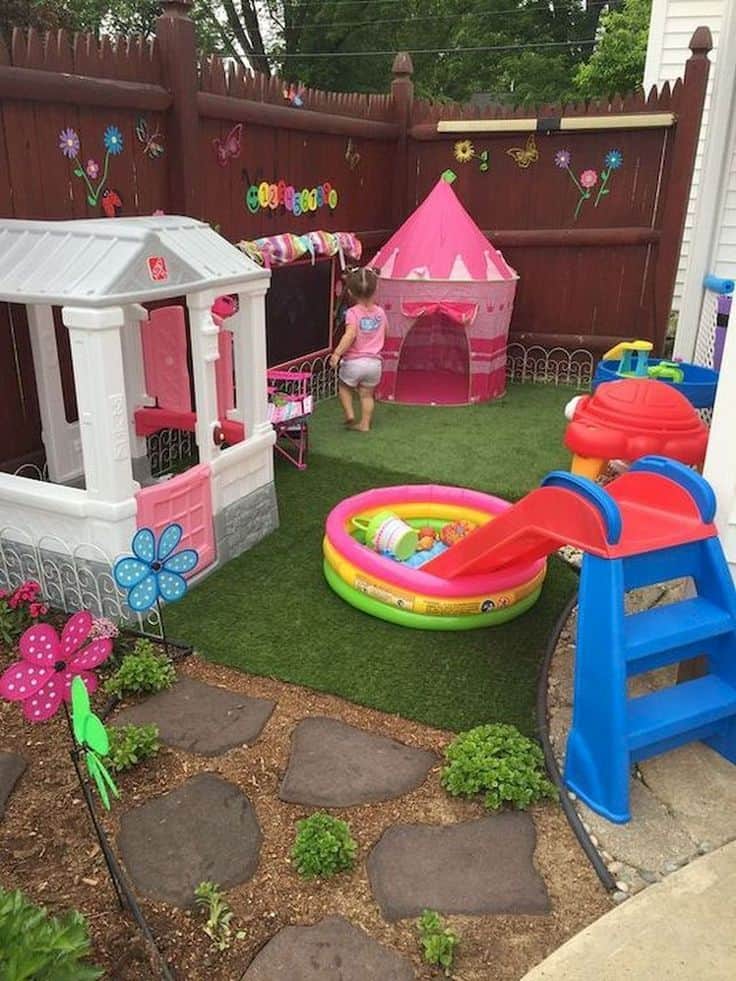In recent years, there has been a marked resurgence in interest toward outdoor spaces, particularly in the context of family-centric activities. Backyards are no longer merely extensions of the home, but vibrant spaces where children can learn, play, and engage with nature. Creating a fun and stimulating environment for children does not necessitate extravagant expenditures; instead, innovative and budget-friendly ideas can transform any outdoor space into a haven of entertainment and education.
Understanding the educational significance of outdoor play is essential. Scholars have documented the myriad benefits of increased outdoor activity, which can include enhanced motor skills, improved social interactions, and a deeper appreciation for the natural world (Ginsburg, 2007). By designing a backyard that is both enjoyable and accessible, parents and caregivers can foster this growth without succumbing to financial strain.
This discourse shall explore various budget-friendly ideas to enliven your backyard, focusing on the thematic categories of creative play spaces, low-cost activities, and eco-friendly projects. Each section will examine practical implementations that can be adapted to various outdoor environments.
Creative Play Spaces: Imagining the Possibilities
A consideration of creative play spaces reveals that the best environments are characterized by flexibility and adaptability. Rather than investing in traditional playground equipment, which often demands considerable financial resources and considerable space, families can instead cultivate imaginative play areas using simple implements.
The Art of DIY: Building Your Own Play Structures
Constructing homemade play structures not only reduces costs but also serves as an engaging family project that encourages teamwork. Simple plans for building a wooden fort, a tire swing, or a rope ladder can be found online. Utilizing recycled materials, such as wooden pallets or old tires, can significantly mitigate expenses while enhancing the creativity of the project. Involving children in the construction process offers dual benefits: they engage physically and mentally, honing skills such as problem-solving and teamwork.
Natural Play Areas: Embracing the Outdoors
Incorporating natural elements into the backyard can stimulate imagination while fostering a connection to the environment. Designate a specific area for a “nature exploration zone” where children can safely dig, use tools safely, and interact with flora and fauna. Simple elements like logs for climbing, rocks for balancing, or shallow digging areas promote not only imaginative play but also physical development. This allows youngsters to engage in unstructured play, which researchers argue is essential for holistic development (Fjørtoft, 2001).
Low-Cost Activities: Unleashing Creativity Through Structured Play
While imaginative play is essential, structured activities can also provide an exhilarating way to occupy children outdoors. The key to keeping costs down lies in repurposing everyday items into sources of enjoyment.
The Wonders of Water Play
Water play is an uncomplicated yet highly effective way to keep children entertained. A simple kiddie pool or even buckets filled with water can be sources of boundless joy. Incorporate everyday kitchen items, such as cups, spoons, and funnels, to create a mini water engineering project where children can splash and experiment with concepts such as volume and flow. Not only does this provide immediate amusement, but it also serves as an informal science lesson, merging play with education.
Crafts and Nature: Merging Art with the Environment
Gathering natural materials such as sticks, leaves, and stones can inspire children’s creativity and allow them to create art pieces or functional items, such as birdfeeders. Encouraging artistic expression through nature-centric crafts reinforces environmental awareness and stewardship. By exploring diverse artistic mediums—such as painting on rocks or creating leaf rubbings—children can gain invaluable skills while developing an appreciation for their surroundings.
Eco-Friendly Projects: Sustainability in the Backyard
In today’s context, it is increasingly imperative to integrate sustainability into our outdoor designs and activities. Eco-friendly projects reinforce a consciousness of environmental stewardship while educating children about their ecological footprints.
Creating a Garden: Learning Through Growth
Establishing a small garden can be an immensely rewarding endeavor. Even a modest plot or a few pots can provide profound learning opportunities as children witness the transformative process of planting, nurturing, and harvesting. Utilizing kitchen scraps for composting not only reduces waste but also enriches the soil, imparting valuable lessons about the cycle of life and sustainable practices.
Building Birdhouses: Welcoming Wildlife
Engaging with local wildlife can catalyze children’s curiosity about nature. Constructing simple birdhouses using recycled materials can invite various species to your backyard, thereby creating a natural habitat. This project illuminates the importance of biodiversity and allows children to observe animal behaviors, facilitating a deeper understanding of ecological balances and relationships.
Outdoor Learning Stations: An Open-Air Classroom
Another innovative way to combine education with outdoor play is through the establishment of learning stations that encourage exploration and inquiry. For example, an outdoor reading nook adorned with comfortable seating can motivate children to engage with literature in a serene environment. Similarly, a science station with magnifying glasses and identification charts can inspire curiosity about insects and plants. These learning stations empower children to become independent learners while valuing the beauty of the natural surroundings.
Conclusion: Cultivating a Joyful and Sustainable Future
Budget-friendly ideas for creating a stimulating backyard experience resonate as being indispensable in nurturing childhood development. By leveraging creativity and resourcefulness, families can design outdoor spaces that are not only fun and engaging but also promote learning, environmental stewardship, and social interaction. The varied projects described above exemplify how simple, cost-effective endeavors can yield profound benefits for children, ultimately facilitating a holistic appreciation for both their own agency and the environment they inhabit. The possibilities for enriching backyard play are limited only by one’s imagination, making it essential to embrace a spirit of creativity amidst financial constraints.
References:
Fjørtoft, I. (2001). The Natural Environment as a Playground for Children: The impact of outdoor play activities in pre-primary school children. Environmental Education Research, 7(2), 114-131.
Ginsburg, K. R. (2007). The Importance of Play in Promoting Healthy Child Development and Maintaining Strong Parent-Child Bonds. Pediatrics, 119(1), 182-191.









Leave a Comment